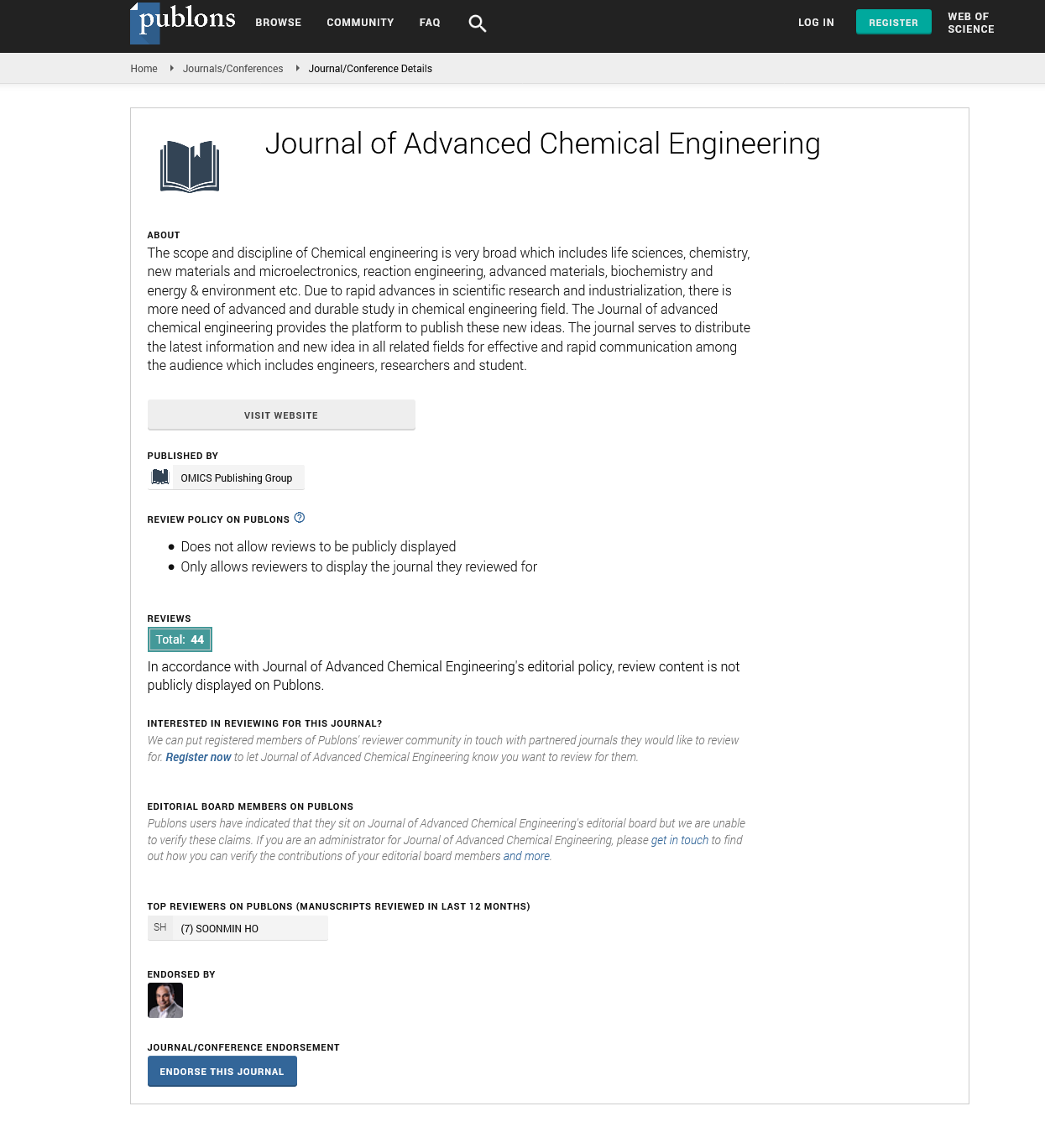Indexed In
- Open J Gate
- Genamics JournalSeek
- Smithers Rapra
- RefSeek
- Directory of Research Journal Indexing (DRJI)
- Hamdard University
- EBSCO A-Z
- OCLC- WorldCat
- Scholarsteer
- Publons
- Geneva Foundation for Medical Education and Research
- Google Scholar
Useful Links
Share This Page
Journal Flyer

Open Access Journals
- Agri and Aquaculture
- Biochemistry
- Bioinformatics & Systems Biology
- Business & Management
- Chemistry
- Clinical Sciences
- Engineering
- Food & Nutrition
- General Science
- Genetics & Molecular Biology
- Immunology & Microbiology
- Medical Sciences
- Neuroscience & Psychology
- Nursing & Health Care
- Pharmaceutical Sciences
Perspective - (2023) Volume 13, Issue 1
Metal Ions: It's Toxicity and Applications
Xang Ju*Received: 03-Feb-2023, Manuscript No. ACE-23-19711; Editor assigned: 06-Feb-2023, Pre QC No. ACE-23-19711 (PQ); Reviewed: 21-Feb-2023, QC No. ACE-23-19711; Revised: 28-Feb-2023, Manuscript No. ACE-23-19711 (R); Published: 07-Mar-2023, DOI: 10.35248/2090-4568.23.13.268
Description
The role of reactive oxygen species in the toxicity of transition metal ions and the subsequent oxidative degradation of biological macromolecules. In contrast to lead, cadmium, mercury, and nickel, which deplete glutathione and protein-bound sulfhydryl groups, metals such as iron, copper, chromium, and vanadium undergo redox cycling. This results in the production of reactive oxygen species such as superoxide ion, hydrogen peroxide, and hydroxyl radical. As a result, DNA damage, increased lipid peroxidation, and altered calcium and sulfhydryl balance take place. Most membrane fractions, including mitochondria, microsomes, and peroxisomes, may frequently exhibit Fenton-like reactions. In response to metal ions, phagocytic cells could be yet another significant producer of reactive oxygen species. Furthermore, several investigations have revealed that metal ions may be necessary for the production of reactive oxygen species through redox cycling quinones and similar molecules.
One of the most important environmental issues of our day is heavy metal pollution. Due of its resistance and longevity in the environment, heavy metal remediation is a topic of particular concern. Numerous techniques for removing heavy metals from wastewater have been thoroughly researched in recent years. This essay analyses and discusses the existing heavy metal wastewater treatment systems currently in use. Chemical precipitation, ion- exchange, adsorption, membrane filtration, coagulation- flocculation, flotation, and electrochemical techniques are among these technologies.
The typically brown Di Amino Benzidine (DAB) reaction was observed to change colour in the presence of three metallic ions: NiCl2, CoCl2, and CuSO4. Purplish blue (NiCl2), dark blue/ bluish black (CoCl2), and greyish blue were among the hues (CuSO4). They have discovered that the CoCl2 + DAB is the ideal ion because:
• It produces an unique dark blue hue that is clearly distinguished from brown DAB
• The blue reaction product is remarkably stable throughout the whole staining process
• Background staining is hardly noticeable
The double staining method that uses two different antigens in the same slice can be used with these findings. The avidin-biotin peroxidase complex (Co-DAB)-peroxidase-anti peroxidase (DAB) method produced the best results among the staining procedures discussed because: no antibody elution was required after the avidin-biotin peroxidase complex procedure when the CoCl2- DAB modification was used; and no background staining happened.
The review of transition metal ions in photocatalytic reactions is divided into two main categories: their impact on the rate of photocatalytic reactions (primarily oxidation), and their transformation into less toxic species or deposition on the semiconductor catalyst surface for the recovery of valuable and expensive metals. The majority of the hypothesized mechanisms are described together with experimental physicochemical data that backs up the relevant pathways.
The treatment of water or air streams that simultaneously contain organic, biological, or inorganic pollutants is possible to heterogeneous photocatalysis. The method has been effectively used to purify the air, for example, by destroying Volatile Organic Compounds (VOCs) in the gas phase. The method has various benefits for water purification or remediation, including the use of oxygen as the only oxidant, the capacity to conduct simultaneous oxidative and reductive reactions, cheap costs, and the utilization of solar radiation. Because more than 50% of the population depends on groundwater for drinking, cleaning and disinfection of these fluids is a crucial environmental issue.
Heterogeneous photocatalysis for water treatment is still in the research stage, though, because it still has certain fundamental issues that must be resolved before it can be used effectively. In this view, basic research is still required to enhance the photocatalyst performance, raise low photon efficiencies, increase total rates, and shorten conversion durations.
Citation: Ju X (2023) Metal Ions: It’s Toxicity and Applications. Adv Chem Eng. 13:268.
Copyright: © 2023 Ju X. This is an open-access article distributed under the terms of the Creative Commons Attribution License, which permits unrestricted use, distribution, and reproduction in any medium, provided the original author and source are credited.

